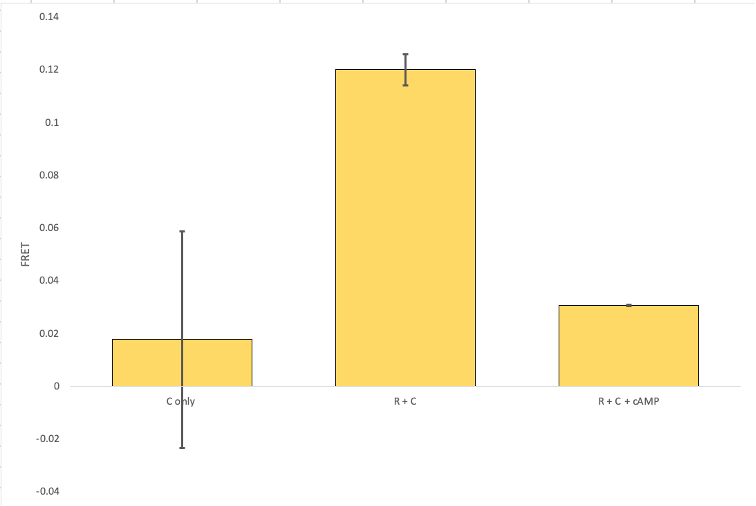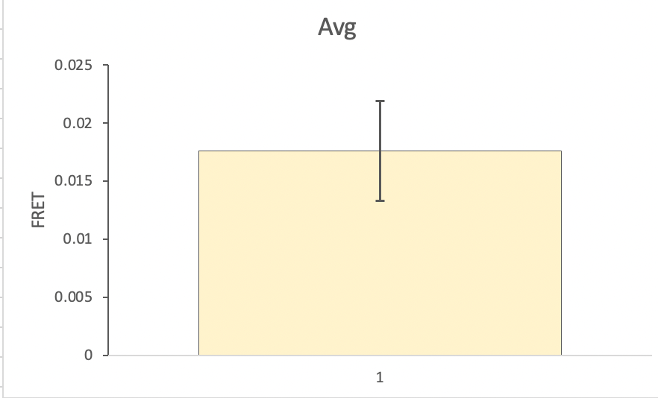Last week, my research activities mainly consisted of performing past experiments to ensure that all the equipment were working properly. Fluorescence Resonance Energy Transfer or FRET is the technique that I will be using throughout the summer, and it requires the proteins that I deal with to be labeled with dyes. Past experiments that I conducted were observing FRET interaction between R subunit of the PKA labeled with cy5 dye and the C subunit of the PKA labeled with cy3 dye.

This past week, the experiments were successfully accomplished. High FRET value indicates a low distance between the proteins containing the dyes and low FRET value indicates high distance between the proteins containing the dyes. Here, we can see that the FRET value for a solution containing just the R subunit and C subunit is high. This result is to be predicted since the solution with just R and C subunit indicates that the PKA is in its apo state (inactive state) with the two subunits bound together. As cAMP enters the solution, however, we see that the FRET value decreases. This is an accurate representation since cAMP binds to C subunit to activate PKA which releases C subunit. As C subunit is released from the complex, the distance between the C subunit and the R subunit of the PKA increases.
Next week, I will be finishing up labeling the proteins including smoothened and the C subunit of the PKA. Then, I will attempt to observe the FRET interaction between the C subunit and the PKA and establish the endpoints of the titration to observe how the two proteins come together and bind.
Some challenges that I faced were inconsistent data for calculating the FRET value of the C subunit. I had conducted three trials for each FRET experiment and in the bar graph, you can see that the standard deviation is much larger for the C subunit solution than it is for R+C solutions and R+C+cAMP solutions.

I conducted the experiment for C subunit only after changing some parameters. This significantly improved the consistency of the FRET value for C subunit only throughout the three trials. This experiment with C subunit only is a control experiment where the expected value is a very low numerical FRET value which the results turned out to comply.
Please sign in
If you are a registered user on Laidlaw Scholars Network, please sign in